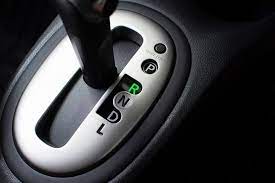There are a few possible reasons why a car would stall in reverse. The usual suspects include a bad solenoid, failing clutch pack, low fluid level, or a bad torque converter.
- A faulty solenoid can cause the car to stall when shifted into reverse. Solenoids help control the flow of transmission fluid through the valve body of your vehicle. If the solenoid pack is not working properly, fluid cannot be routed to different parts of your vehicle’s transmission system. This eventually causes shifting problems and may even result in stalling in reverse.
- Another possible problem is that the clutch packs are worn out or damaged beyond repair. Clutch packs are responsible for locking and unlocking different sets of gears inside your transmission system like power steering systems change direction with hydraulic cylinders . When these clutch packs start to wear out over time because of rust or excessive heat (and thus friction), they can no longer lock properly—which could cause stalling if you shift into reverse while moving forward at high speed.
A bad solenoid
To understand why, you’ve got to know how a car moves in reverse. When you shift it into gear, the transmission shifts the gears so the car can turn backwards. The transmission fluid acts as the hydraulic element that makes this possible. The solenoid controls the flow of transmission fluid by opening and closing valves. If there’s a problem with your solenoid, your automatic car isn’t going to be able to move in either direction.
The good news is that you don’t need to be a mechanic yourself in order to solve this problem: simply take your car into a repair shop for service and have them check out the solenoid.
A failing clutch pack
Naturally, friction moving parts create heat as they rub against each other. In an automatic transmission, the fluid is responsible for absorbing this heat and dissipating it throughout the rest of the transmission so that it doesn’t melt or break apart. If the fluid isn’t doing its job, then you start to get hot spots where those moving parts are creating more friction than usual. And if those hot spots aren’t brought back down to operating temperature, you’ll start to notice problems like drivability issues or a lurching feeling when accelerating through gears.
That’s why it’s important to keep your eye on your transmission fluid levels. When you check your car’s fluids (engine oil, coolant and brake/power steering), make sure to include a glance at the transmission dipstick near your engine block so you can see how dirty or clean this particular liquid is looking. A brownish color indicates that dirt has built up due to wear on those friction-causing moving parts; black means that there’s burnt material in there from high temperatures (which often indicates a lack of coolant). If either of these is true, it’s time to change out your fluid—or see if there are any other issues causing them in the first place!
A low fluid level
If you drive an automatic car, the most likely cause of your stalling is a low fluid level. Slippage is a common issue when you’re driving in reverse and your transmission fluid level is low. When this happens, there’s no pressure on the gears to keep them from slipping and stalling. If your reverse gear isn’t working as well as it used to or your car hesitates when shifting into reverse, have a mechanic check out the transmission.
A bad torque converter
The most common cause of a car that stalls (shudders, shakes, or dies) in gear is a bad torque converter.
Torque converters are only found on automatic cars. If you have a manual transmission and your car stalls when it’s put in gear, you should check to see if the clutch is broken instead.
A torque converter is a fluid coupling that transfers rotating power from an engine’s crankshaft to a component connected to it, like the transmission. When they fail, they sometimes allow too much fluid to flow from the pump side of the torque converter to the turbine side—this causes your car’s engine to work harder than usual and can potentially cause stalling due to low engine RPM. The problem can also manifest itself as rough shifting of gears.


